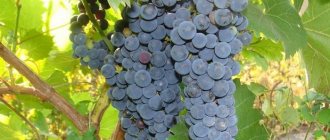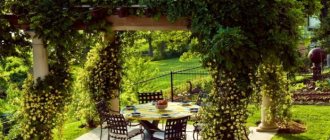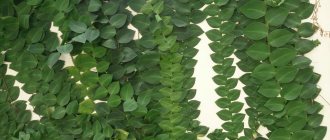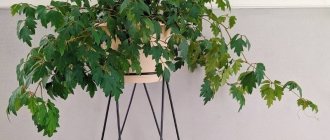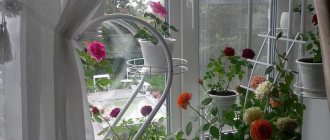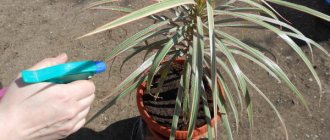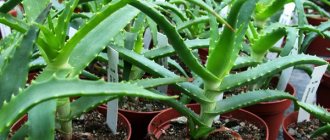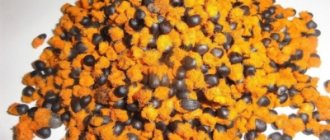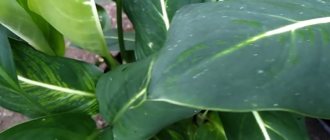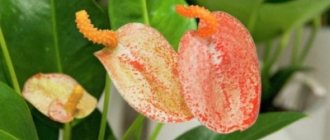If you want to plant a liana-like plant in your garden, you should know what type it is in order to grow it correctly and create all the necessary conditions for normal growth. In our article we will tell you about the types of climbing vines, leaning, climbing and clinging vines, as well as some of the nuances of their cultivation.
Lianas are able to decorate our site, as well as disguise some objects on it. When growing vines, you should take into account their belonging to one species or another.
Varieties of vines for the garden
Lianas grow mainly in tropical forests, where, spreading from tree to tree, they form impenetrable thickets. In areas with a temperate climate, they are more often found not in the natural environment, but in the landscape of private and botanical gardens and parks. All vines cultivated in gardens are divided into two groups : perennial plants with woody trunks that overwinter without shelter, and herbaceous plants with thin stems that in most cases die off in the winter.
Woody vines are evergreen , which do not shed their leaves in the cold season, and deciduous . Evergreens rarely have good resistance to sub-zero temperatures, so their list is much shorter than deciduous ones. Some vines are valued for their decorative foliage, which takes on a beautiful shade in the fall, while others are valued for the splendor of their blooms. Some plants produce edible berries (grapes), so they are grown for their fruits.
Annual climbing plants stand out as a special group . They propagate by seeds and are used in landscaping private plots of land along with their perennial relatives.
General information
A feature of climbing garden vines is their thin stem, which does not allow them to hold massive foliage vertically. Ornamental vines for the garden adapt to survival by attaching to vertical supports with tendrils, suckers, shoots, thorns and auxiliary roots.
Lianas originate from the tropics and subtropical countries of Africa, Asia and America, but have long been acclimatized not only on European territory, but also in the harsh Siberian and Far Eastern conditions. Photos of vines for the garden delight all lovers.
There are many varieties of climbing plants, which are usually classified into two broad categories: annuals and perennials. Both groups include decorative and fruit-bearing varieties.
Using vines in the garden landscape
Since the stems of vines are unstable, their use in landscape design is somewhat limited. They are grown where there is support: near the walls of buildings, near fences, sheds. Pergolas are also specially built to support long lashes.
Pergola for climbing plants
The flexibility of vine-like vines can be used to create a picturesque arch over a gate, porch, or entrance to a gazebo.
Arches with clematis
By constructing a simple canopy from vertical posts and several horizontal crossbars, you can create a green roof instead of a roof. Of course, it will not save you from heavy rain, but it will provide shade on a hot day.
Maiden grapes gazebo
Climbing plants are also used as hedges for zoning a site. Their whips are directed along lattice fences and chain-link mesh to protect the yard or resting place from prying eyes.
Morning glory as a hedge
Another area of use of liana-like plants is the creation of colorful carpets on the soil. The scourges simply float along the ground without support, quickly grow and fill the empty space.
Ivy carpet
Perennial deciduous vines
This is the most numerous group of all types of vines. Their advantage is unpretentiousness, ease of care, and large annual growth. Under favorable conditions for development, in 2-3 seasons, some deciduous climbing plants are able to completely weave a fence, gazebo or wall of a house. The disadvantage of most of them is their ability to form shoots, which can be difficult to deal with. To control the growth of the root system, it is recommended to fence each plant with a border dug to a depth of 30 cm.
Vineyard aconitifolia
Ampelopsis (vineyard) aconite-leaved, is a vine that reaches a length of 8 m. During one growing season it adds up to 3 m. The advantage is its beautiful, deeply dissected leaves. The vineyard is especially magnificent in the fall, when the foliage takes on a rich golden color.
Small berries hanging in beautiful clusters, resembling multi-colored beads when ripe, are also decorative. The liana is resistant to diseases and pests and tolerates pruning well. For landscaping, it is enough to use 1 plant for every 4 m of fence.
Maiden grapes
The most common in temperate latitudes are five-leaf and attached maiden grapes. It grows quickly, does not react to dusty air, and is almost not damaged by pests and diseases. If you need an unpretentious plant, it is better to opt for the five-leaf subspecies. It grows in almost all types of soil and is tolerant of soil freezing. A striking representative of the five-leaf grape is the variety "Murorum" . It is distinguished by strong foliage of the vine and a more uniform (compared to species-specific maiden grape) surface coverage. In autumn, the foliage takes on a rich red color and a glossy shine.
The advantage of the attached maiden grape is its unique ability to climb a flat vertical plane without the use of support.
The flattened tendrils literally dig into the surface, securely holding the vine under the strongest gusts of wind. But it is worth noting that this type of virgin grapes is demanding on the soil: it must be loose, drained and light. The plant tolerates drought more easily than heavy soil with stagnant moisture.
Clematis vinifolia
An unpretentious liana-like shrub that forms a lush, impenetrable curtain. Grape-leaved clematis (clematis) blooms profusely and for a long time: from late June to August. Numerous white or milky flowers are collected in fluffy inflorescences. Climbing branches do not need tying, since the plant clings to the supports with long leaf petioles.
Clematis vinifolia can grow in open sunny areas, but will show itself in all its glory in light partial shade. Loves moderate watering, well-drained soils. It tolerates gas and dust well, so it is often used as a hedge on the side of a busy road.
Common hop
Hop vines are covered with small thorns, thanks to which the plant quickly climbs nearby supports and forms continuous green walls.
The plant has two disadvantages. Firstly, the constantly growing root system is rapidly occupying new territory. Secondly, the shoots that have grown during the season die off in the winter. Because of this, hops are not suitable for decorating ugly fences and old, unsightly-looking buildings, since in the winter they become bare and look untidy.
Schisandra chinensis
Schisandra chinensis is also great for vertical gardening. But you need to keep in mind that long shoots are formed only with weak shading - in this case they reach 4–5 meters. In a sunny place it grows like an ordinary shrub and bears fruit well. Round red berries have a strong tonic effect. Schisandra chinensis is durable. Attached to the support with the help of shoots and leaf petioles.
Schisandra chinensis
Perennial evergreen vines
Late autumn comes, and all the beauty of deciduous plants disappears - only bare branches remain. This is not the case with evergreen vines; they retain their color all 24 months of the year. Of course, there are not so many of them in comparison with deciduous ones, but they are able to enliven the garden at any time.
Ivy
The most common representative of evergreen vines is common ivy.
A plant dug up in natural conditions easily takes root in a garden plot. Unlike deciduous vines, it grows somewhat more slowly, but is distinguished by good frost resistance and highly decorative leaves. The plant is capable of climbing to great heights using aerial roots. They grow into wood, plaster, brickwork seams, and firmly hold the plant on sheer walls. Under natural conditions, ivy grows in shady forests, so it is advisable to provide the plant with at least diffuse shade in the garden plot.
There are several varieties of ivy, differing in leaf shape and color. Particularly decorative is Colchis ivy, which has variegated foliage. But it is less frost-resistant and grows more slowly than a species plant. In addition, young shoots need a garter.
Important. Colchian ivy should be planted in sunny areas, since the variegation of foliage decreases in the shade.
Akebia
The heat-loving southern liana began to be grown in temperate latitudes not so long ago. In its natural habitat it is a hardy evergreen plant reaching a length of up to 10 m . Akebia is quite frost-resistant, surviving temperatures down to 200 below zero . The disadvantage is that the vine sheds its leaves in harsh weather conditions and develops like an ordinary deciduous plant. The climate, unusual for the southern liana, also affects flowering - it is significantly reduced. Racemose drooping inflorescences have a pleasant chocolate smell, for which the plant received its second name - chocolate vine .
Advice. To make akebia feel more comfortable in the middle regions, it should be grown near a wall on the south side of the house, where it will receive enough sunlight. For the winter, the vine should be covered with construction insulation and sprinkled with a layer of snow on top.
Honeysuckle honeysuckle evergreen
Honeysuckle honeysuckle is a shrub with straight shoots reaching a length of 6 meters . The leaves are small, leathery, dark green, rich in color. The flowers are tubular, collected in racemes of red, yellow or orange (depending on the variety), odorless. Flowering is long-lasting, from late spring to early autumn. The small red berries are also valuable from a decorative point of view.
The species is frost-resistant. Sometimes, at prolonged low temperatures, annual shoots may freeze. But this does not cause irreparable harm to the plant, since after spring pruning it quickly recovers. Honeysuckle prefers to grow on fertile soils and loves sunny places.
Feeling of the infinity of the site
Climbing vines have the ability to lead into the distance and create depth in the garden. Some of them are valued for their decorative leaves, which are painted in different shades in the fall, others for their lush, luxurious flowering.
Ivy, the most common evergreen vine, has decorative leaves and climbs to great heights.
And the flowing shoots of maiden vines give boring concrete facades and fences a picturesque look and create the impression of inaccessibility. Objects entwined with vines compositionally connect all parts of the site.
Blooming decorative vines
In cases where you need to create not just a hedge of vines, but a vertical flower arrangement, beautifully flowering climbing plants are used. They are more capricious than hops or virgin grapes, and require more attention. But we should give them their due, because with good care they can form a chic flower garden in a small area.
Hydrangea petiolate (climbing)
This is a type of garden hydrangea that develops not as a shrub, but as a vine. It has dark green leaves and fragrant shield-shaped inflorescences that are white with a pink tint. It grows slowly, but is capable of climbing to a height of up to 25 m and weaving around a fairly large area. Young seedlings need winter shelter, but mature plants with a woody trunk can withstand severe frosts without obvious damage.
Petiolate hydrangea is moisture-loving, but does not tolerate stagnant moisture. Prefers acidic (pH 5.0) soil and easily tolerates light shade, although it develops better in open, sunny areas.
Popular varieties of petiole hydrangea:
- Petiolaris. The tallest variety, forming a lush green mass without gaps;
- Cordifolia. The variety is endowed with large inflorescences, consisting of flowers of different sizes, and has a strong aroma;
- Curly. Abundantly flowering variety with umbrella-shaped wide inflorescences of white color;
- Miranda. The lashes reach a length of 10 m ; light veins are clearly visible on the dark green leaves.
Kampsis
A beautiful and strong plant with large tubular flowers, collected in clusters of several pieces. The flowers come in red and orange colors, they form from June to August, and during this period the vine is most attractive. But even after flowering, Kampsis is quite decorative thanks to its large odd-pinnate leaves with a serrated edge.
climbing roses
Climbing roses are beautifully flowering vines with powerful shoots up to several meters long. The flowers are 2–10 cm in diameter, simple, semi-double, double, odorless and fragrant. They bloom only on last year's shoots. Planted in spring in sunny, well-warmed areas with fertile soil. Propagated by cuttings in late June - early July, as well as by grafting. They need to be covered for the winter. They are attached to the supports with branches with thorns, which must first be tied with twine.
Climbing roses
Annual liana-like plants
Annual climbing plants that bloom all summer are used to create bright floral arrangements. just 2-3 weeks they entwine supports up to 3 meters . A striking representative of the bindweed is morning glory.
Multi-colored “gramophone” flowers bloom every day from June to September . The morning glory stem finds support on its own and wraps itself around it. If you need to plant a wall or a solid fence, vertical strings are stretched, along which the plant can easily climb up.
Dolichos purpurea (hyacinth beans) is of interest for creating landscape scenes. The irregularly shaped flowers are collected in large, showy inflorescences and have a rich, persistent aroma. Flowering lasts from May to September , and in warm autumns until October. Starting in August, no less attractive purple pods with beans appear on the vine, hanging in large clusters.
The lashes of decorative beans grow up to 3 m in length per season. The flowers flash against the background of green foliage like fiery red lanterns throughout the summer. The plant tolerates shaded areas well, which is not typical for most annual vines.
If you need to decorate a low hedge, you can use sweet peas. It clings to the fence with long curling tendrils, blooms almost continuously, and fills the garden with a pleasant aroma that evokes nostalgia for childhood.
Advice. Perennial vines may need time to take root and acclimatize immediately after planting. While they are growing shoots, it is recommended to plant annual vines next to them. They will make up for the temporary lack of green mass of their woody relatives.
Aristolochia macrophylla, or kirkazon
Aristolochia macrophylla, or kirkazon , attracts attention with its unusually large leaves (up to 30 cm) and flowers similar to the bells of a saxophone. Grows best in shade and partial shade. For the winter, young plants are covered or removed from their supports and laid on the ground. Attached to the support by flexible shoots and leaf petioles. It is necessary to additionally tie it to the support with twine and direct it towards the support.
Kirkazon, or Aristolochia macrophylla
